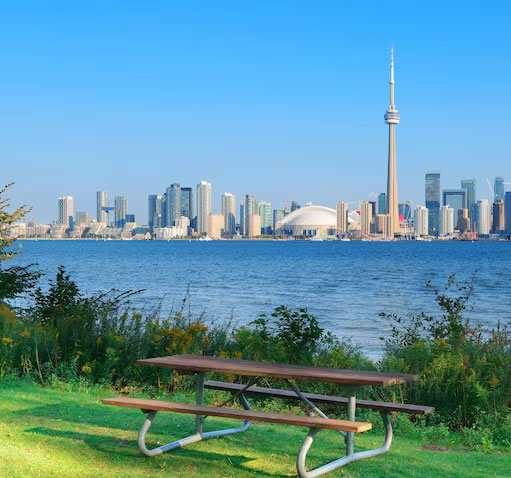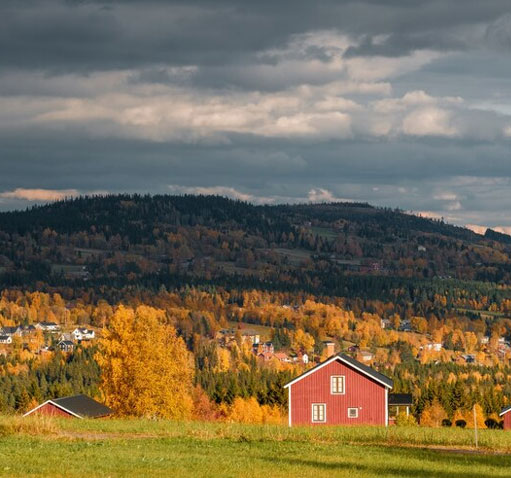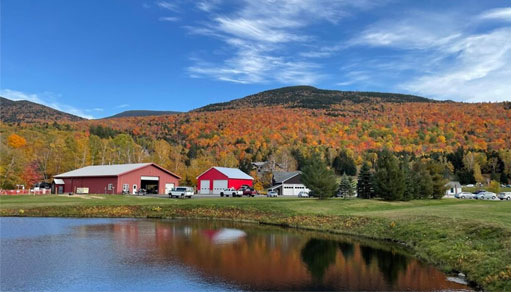
Canada, the second-largest country in the world by land area, offers a diverse range of living environments, from bustling urban centers to serene rural landscapes. The choice between rural and urban life in Canada is influenced by various factors, including lifestyle preferences, economic opportunities, and access to services. This article explores the differences between rural and urban life in Canada, examining aspects such as population density, employment, education, healthcare, transportation, and community life.
Urban areas in Canada are characterized by high population density and a diverse demographic composition. Cities like Toronto, Vancouver, and Montreal are home to millions of people from various cultural backgrounds. These urban centers are hubs of economic activity, offering numerous job opportunities and a vibrant social scene. The population in urban areas tends to be younger, with a significant proportion of immigrants and international students contributing to the cultural mosaic.
Urban areas are also marked by a high degree of cultural diversity. For instance, Toronto is often cited as one of the most multicultural cities in the world, with over half of its residents born outside of Canada. This diversity is reflected in the city’s neighborhoods, restaurants, festivals, and cultural institutions, creating a rich tapestry of global cultures.
In contrast, rural areas in Canada have lower population densities and are often inhabited by long-established communities. The demographic profile of rural areas tends to be older, with a higher proportion of residents born in Canada. Rural communities are typically smaller, fostering close-knit relationships and a strong sense of community. The pace of life in rural areas is generally slower, offering a tranquil and peaceful environment.
Rural areas often have a more homogeneous population, with fewer immigrants and less cultural diversity compared to urban centers. However, this can also mean a stronger sense of local identity and tradition. Many rural communities have deep historical roots, with generations of families living in the same area and maintaining local customs and practices.


Urban areas in Canada boast a wide array of educational institutions, from primary schools to world-renowned universities. Cities offer diverse educational programs, extracurricular activities, and specialized training opportunities. Access to advanced educational resources, such as libraries, museums, and technology, is more readily available in urban settings. Urban schools often have larger student populations and more funding, which can translate into better facilities and a broader range of programs.
For instance, Toronto is home to the University of Toronto, one of the top universities globally, offering a wide range of undergraduate, graduate, and professional programs. Similarly, Vancouver hosts the University of British Columbia, known for its research excellence and beautiful campus. These institutions attract students from around the world, contributing to the vibrant academic and cultural life of the cities.
Education in rural areas can be more challenging due to limited resources and smaller school populations. Rural schools may have fewer extracurricular activities and specialized programs. However, smaller class sizes in rural schools can lead to more personalized attention and stronger relationships between students and teachers. Distance learning and online education have become increasingly important in rural areas, providing access to a wider range of educational opportunities.
Rural schools often play a central role in their communities, serving as hubs for social and cultural activities. Despite the challenges, many rural schools excel in providing a supportive and nurturing environment for students. Programs like the Rural and Northern Education Fund in Ontario aim to address the unique needs of rural schools, ensuring that students have access to quality education regardless of their location.
Urban Healthcare |
Rural Healthcare |
| Urban areas in Canada have extensive healthcare infrastructure, including hospitals, clinics, and specialized medical facilities. Residents of urban centers have access to a wide range of healthcare services, including advanced medical treatments and specialized care. The concentration of healthcare professionals in cities ensures that residents can receive timely and comprehensive medical attention. However, the high demand for healthcare services in urban areas can lead to longer wait times for certain treatments.
For example, Toronto’s Hospital for Sick Children is a world leader in pediatric care, while Vancouver General Hospital offers cutting-edge treatments in various medical fields. Urban residents benefit from the proximity to such facilities, ensuring access to high-quality healthcare. Additionally, urban areas often have a higher concentration of specialists, providing comprehensive care for complex medical conditions. |
Healthcare in rural areas can be more limited, with fewer medical facilities and healthcare professionals. Residents may need to travel long distances to access specialized care or advanced medical treatments. Rural healthcare providers often face challenges such as limited resources and difficulty in recruiting and retaining medical staff. Despite these challenges, rural healthcare providers often develop strong relationships with their patients, offering personalized and community-focused care.
Programs like the Rural and Northern Physician Group Agreement in Ontario aim to address the shortage of healthcare professionals in rural areas by providing incentives for doctors to practice in these communities. Telemedicine has also become an essential tool in rural healthcare, allowing patients to consult with specialists remotely and reducing the need for travel. |

Urban areas in Canada have well-developed transportation networks, including public transit systems, highways, and airports. Cities like Toronto and Vancouver have extensive public transit systems, including buses, subways, and light rail, making it easy for residents to commute and travel within the city. Urban residents also have access to various transportation options, such as ride-sharing services, cycling infrastructure, and pedestrian-friendly streets. However, traffic congestion and long commute times can be significant challenges in urban areas.
For instance, Toronto’s TTC (Toronto Transit Commission) operates a comprehensive network of subways, streetcars, and buses, serving millions of passengers daily. Vancouver’s TransLink system includes buses, SkyTrain, and SeaBus, providing efficient transportation across the metropolitan area. These systems are crucial for reducing traffic congestion and promoting sustainable urban mobility.

Transportation in rural areas is often more challenging due to the vast distances and limited public transit options. Residents of rural areas typically rely on personal vehicles for transportation, which can be costly and time-consuming. Road maintenance and infrastructure development can be more challenging in rural areas, leading to issues such as poor road conditions and limited access during extreme weather. However, the lower population density in rural areas often means less traffic and a more relaxed driving experience.
In some rural areas, community-based transportation services, such as volunteer driver programs, help residents access essential services and appointments. Additionally, provincial and federal governments invest in infrastructure projects to improve road conditions and connectivity in rural regions, recognizing the importance of reliable transportation for economic and social well-being.
Urban areas in Canada are characterized by high population density and a diverse demographic composition. Cities like Toronto, Vancouver, and Montreal are home to millions of people from various cultural backgrounds. These urban centers are hubs of economic activity, offering numerous job opportunities and a vibrant social scene. The population in urban areas tends to be younger, with a significant proportion of immigrants and international students contributing to the cultural mosaic.
Urban areas are also marked by a high degree of cultural diversity. For instance, Toronto is often cited as one of the most multicultural cities in the world, with over half of its residents born outside of Canada. This diversity is reflected in the city’s neighborhoods, restaurants, festivals, and cultural institutions, creating a rich tapestry of global cultures.
In contrast, rural areas in Canada have lower population densities and are often inhabited by long-established communities. The demographic profile of rural areas tends to be older, with a higher proportion of residents born in Canada. Rural communities are typically smaller, fostering close-knit relationships and a strong sense of community. The pace of life in rural areas is generally slower, offering a tranquil and peaceful environment.
Rural areas often have a more homogeneous population, with fewer immigrants and less cultural diversity compared to urban centers. However, this can also mean a stronger sense of local identity and tradition. Many rural communities have deep historical roots, with generations of families living in the same area and maintaining local customs and practices.
Urban areas face significant environmental challenges, including air pollution, noise pollution, and the urban heat island effect. The high concentration of buildings, vehicles, and industrial activities in cities contributes to environmental degradation. However, urban areas also have the potential for sustainable development, with initiatives such as green buildings, public transit, and urban green spaces aimed at reducing environmental impact. Cities are increasingly adopting policies and practices to promote sustainability and environmental stewardship.
For example, Vancouver has set ambitious goals to become the greenest city in the world, with initiatives focused on reducing carbon emissions, increasing green spaces, and promoting sustainable transportation. Toronto has implemented programs to enhance energy efficiency in buildings, reduce waste, and improve air quality. These efforts reflect a growing recognition of the importance of sustainability in urban planning and development.
Rural areas are often characterized by natural landscapes, including forests, lakes, and agricultural land. The lower population density and reduced industrial activity in rural areas contribute to a cleaner and quieter environment. Rural residents often have greater access to outdoor recreational activities, such as hiking, fishing, and camping. However, rural areas can also face environmental challenges, such as deforestation, soil erosion, and water pollution, particularly in regions with intensive agricultural or resource extraction activities.
Conservation efforts in rural areas focus on preserving natural habitats, protecting wildlife, and promoting sustainable land use practices. Programs like the Canadian Agricultural Partnership support farmers in adopting environmentally friendly practices, such as crop rotation, soil conservation, and water management. Additionally, rural communities often play a crucial role in protecting Canada’s vast natural resources and biodiversity.
The choice between rural and urban life in Canada depends on individual preferences, lifestyle, and priorities. Urban areas offer diverse economic opportunities, advanced healthcare, and a vibrant cultural scene, but they also come with challenges such as high living costs and environmental issues. Rural areas provide a peaceful and close-knit community life, with a strong connection to nature, but may have limited access to services and employment opportunities. Ultimately, both rural and urban life in Canada have their unique advantages and challenges, and the decision to live in one or the other is a deeply personal one.
In conclusion, whether one chooses the dynamic and bustling life of an urban center or the tranquil and community-oriented life of a rural area, Canada offers a rich and diverse living experience. Each setting provides unique opportunities and challenges, and the choice between rural and urban life ultimately depends on what individuals value most in their daily lives.

Having an 'Identity Verified' badge or being 'Identity Verified' simply indicates that an individual has submitted information to complete our identity verification process or we have conducted internal verification using various authorized websites. While this process includes safeguards, it does not guarantee that the person is who they claim to be.
If you encounter any issues with this profile, please report them here. While all consultants who are verified have RCIC ID, we may not have the latest data in terms of their renewal/cancellation/discontinuation of their RCIC ID.
The "Verified Consultants" profiles are created using publicly available information, including data from the IRCC website, official consultant sites, other listing platforms, and social media. Immiperts.com is an independent platform, not affiliated with IRCC or any registered immigration consultants. To update, claim, or remove your profile, please contact us at [email protected].
╳